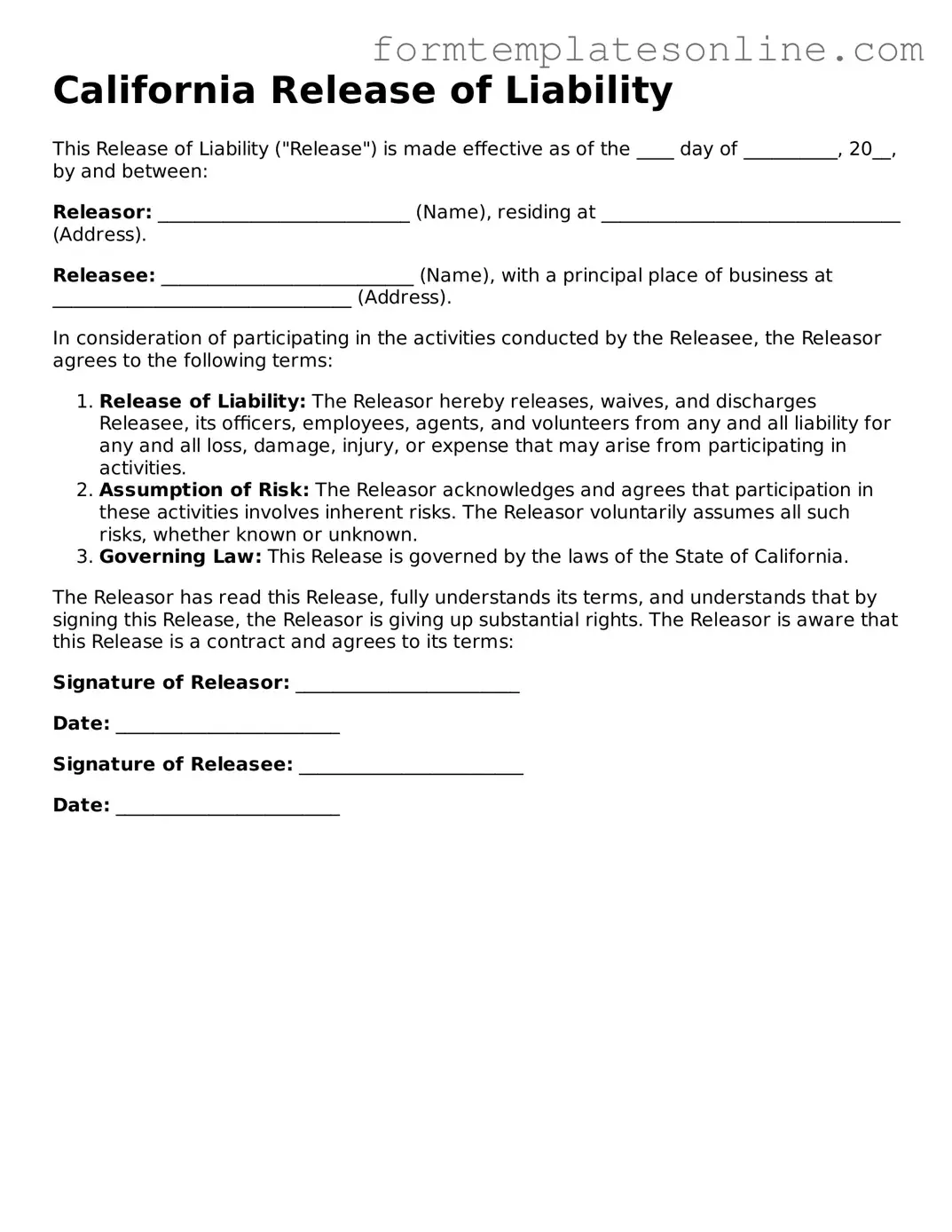What is a California Release of Liability form?
A California Release of Liability form is a legal document that individuals or organizations use to protect themselves from liability for injuries or damages that may occur during an activity. By signing this form, participants acknowledge the risks involved and agree not to hold the organizer responsible for any accidents or injuries that may happen while engaging in the activity.
When should I use a Release of Liability form?
This form is commonly used for activities that involve a certain level of risk, such as sports events, recreational activities, or any situation where participants could potentially be injured. If you are organizing an event or activity that carries risks, it is wise to have participants sign a Release of Liability form to help mitigate potential legal claims.
Who should sign the Release of Liability form?
All participants in the activity should sign the form. If the participant is a minor, a parent or legal guardian must sign on their behalf. This ensures that the responsible adult acknowledges the risks and agrees to the terms of the release for their child.
What does the Release of Liability form typically include?
The form usually includes a description of the activity, a statement about the inherent risks involved, and a clause where the participant waives their right to sue for injuries or damages. It may also outline any specific rules or guidelines participants must follow during the activity.
Is a Release of Liability form enforceable in California?
Yes, a Release of Liability form can be enforceable in California, provided it is properly drafted and meets legal requirements. However, certain limitations exist. For example, the form cannot protect against gross negligence or willful misconduct. It is important to ensure that the language used in the form is clear and unambiguous to enhance its enforceability.
Can a participant revoke their agreement after signing the form?
Once signed, the agreement is generally binding. However, participants may have the right to revoke their consent before the activity begins, especially if they feel uncomfortable or unsafe. It is crucial for organizers to communicate openly and allow participants to voice their concerns.
Do I need a lawyer to draft a Release of Liability form?
While it is not strictly necessary to hire a lawyer, it is highly recommended. A legal professional can ensure that the form complies with California laws and adequately protects your interests. A well-drafted form can help prevent misunderstandings and potential legal disputes in the future.
What happens if someone gets injured despite signing the form?
If an injury occurs, the enforceability of the Release of Liability form will be evaluated based on the circumstances. Courts may consider factors such as the clarity of the waiver, the nature of the injury, and whether any negligence occurred. It is important to remember that a signed release does not guarantee immunity from all claims.
Can I customize the Release of Liability form for my specific activity?
Yes, you can customize the form to fit the specific activity you are organizing. Tailoring the document to include relevant details about the risks associated with your activity will make it more effective. Just ensure that any modifications still comply with California law and maintain clarity in the language used.
